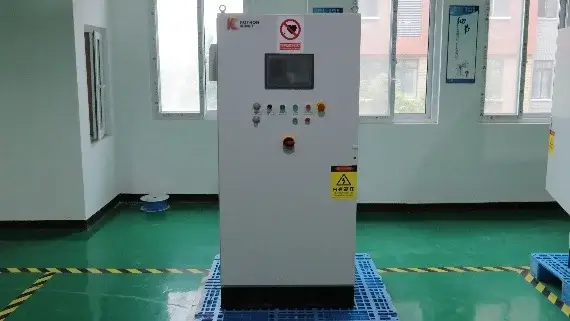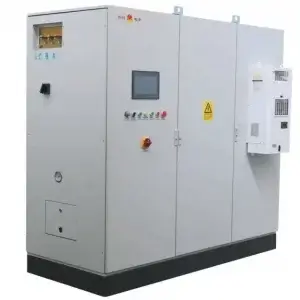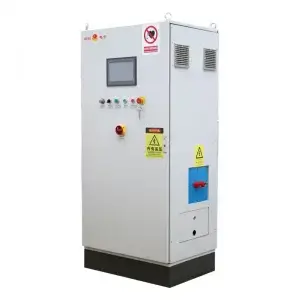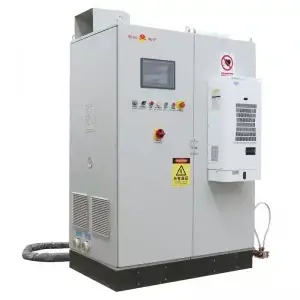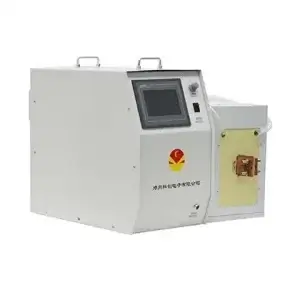Key Features of Induction Brazing for HVAC Refrigerant Distributors
-
Precision Temperature Control
- Utilizes advanced induction heating technology to achieve ±2°C temperature accuracy, ensuring optimal brazing for delicate refrigerant channels.
- Dynamically adjusts frequency (20–100 kHz) based on distributor size and copper/brass material properties.
-
Non-Contact & Oxidation-Free Heating
- Electromagnetic induction provides uniform heating without direct flame contact, minimizing oxide formation on tube surfaces.
- Reduces post-brazing cleaning requirements by 80%, improving production efficiency.
-
High-Speed Processing
- Achieves brazing temperatures (850–950°C) in 5–15 seconds, significantly faster than traditional torch brazing (30–60 seconds per joint).
- Supports high-volume production with cycle times as low as 30 seconds per distributor.
-
Customized Coil Design
- Tailored induction coils fit complex geometries (e.g., multi-branch distributors, angled nozzles) for precise heat targeting.
- Segmented coils enable simultaneous heating of multiple joints, ensuring consistent braze quality across all connections.
-
Energy Efficiency
- Power conversion efficiency ≥92%, consuming 40–50% less energy than gas-fired brazing systems.
- Compliance with ISO 14001 environmental standards due to low carbon emissions.
-
Process Repeatability
- PLC-controlled automation with pre-set recipes ensures identical brazing parameters for every part, reducing human error.
- Real-time monitoring of current, voltage, and temperature via HMI interface guarantees traceable quality records.
-
Material Compatibility
- Ideal for brazing copper-to-brass, brass-to-brass, and copper-to-steel joints in refrigerant distributors.
- Works with silver-based filler metals (e.g., BAg-4, BAg-7) to form leak-tight seals compliant with ASHRAE 34 standards.
-
Safety & Compliance
- Equipped with overheat protection and emergency shutdown systems, meeting OSHA and CE safety regulations.
- Low electromagnetic field (EMF) emissions (<3 mG) ensure operator safety during long-term use.
-
Reduced Thermal Stress
- Selective heating minimizes heat exposure to non-brazed areas, preventing distortion of thin-walled tubes (wall thickness ≤0.8 mm).
- Consistent thermal profiles reduce the risk of micro-cracks in critical refrigerant pathways.
